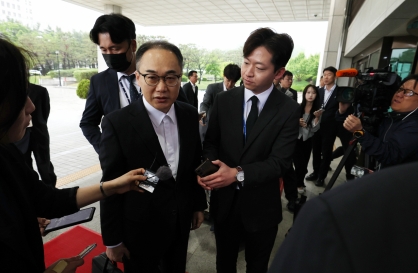[KH explains] Does second coronavirus wave pose a greater risk?
By Park Han-naPublished : Aug. 19, 2020 - 16:14

The new wave of coronavirus infections in South Korea looks similar to what the country experienced earlier this year: The first peak in late February and early March was driven by chain transmissions among members of the religious sect the Shincheonji Church of Jesus in Daegu, while the infections that are spiking now are mainly linked to a Seoul-based church.
As of Wednesday at noon, 623 confirmed cases have been traced to the Sarang Jeil Church in Seongbuk-gu, Seoul, since the first case was reported there on Aug. 12. The church is led by controversial pastor Jun Kwang-hoon, who is a vocal critic of President Moon Jae-in.
The Daegu branch of the Shincheonji Church is still the single largest infection cluster in the country with 5,214 cases, but experts warn the impact of the ongoing church-driven virus resurgence may outpace that of the first for a number of reasons.
Population density
Health authorities are paying close attention to the fact that the main venues of mass infections are located in densely populated areas -- Seoul and nearby Gyeonggi Province and Incheon -- where nearly half of the country’s population, some 25 million people, reside.
Those who have contracted the virus from the church quickly spread it to 144 locations where they work and visit, such as other churches, several call centers, hospitals and nursing homes.
Virus hits elderly
Another concerning factor is that those aged over 60 accounted for 38 percent of the total cases traced to the Sarang Jeil church, compared to the Shincheonji cluster’s 14.3 percent.
“We should take note that they (older adults) are at higher risk for severe illness (from the virus),” Kwon Jun-wook, deputy director of the Central Disease Control and Prevention, said during a briefing Wednesday.
Elderly patients are more susceptible to COVID-19 and have a significantly higher mortality rate.
No patient in critical condition has yet to be reported since the first case was detected from the church on Aug. 12.
“The number of patients with serious symptoms starts to increase an average of seven to 10 days after the first infection is reported” in a cluster, said Gwak Jin, an official at the Central Disaster and Safety Countermeasure Headquarters.
Unidentified marchers at risk
As 10 members of the Sarang Jeil Church attended at least one of two anti-government protests near the main palace Gyeongbokgung on Aug. 8 and at Gwanghwamun Plaza on Saturday, a large number of unidentifiable people from various regions across the country who gathered for the rallies could have been exposed to the virus and passed it on to others.
As of Wednesday, 10 other protesters unrelated to the church have been confirmed as infected.
“The concern over additional transmissions through close contact during rallies has become reality,” Kwon said.
He urged people who joined the demonstrations to get tested, saying that although the protests took place outside on the street, people didn’t keep a distance of 2 meters from each other and some didn’t wear face masks.
Highly infectious GH strain
“There’s a high probability that the virus currently spreading in Seoul and the surrounding areas is linked to the highly contagious GH strain,” Kwon said.
COVID-19 can now be classified into seven different strains -- S, V, L, G, GH, GR and O, according to the World Health Organization.
The GH strain of the virus spreads six times faster than others, including the V strain that was confirmed in cases linked to the Shincheonji church.
The GH clade began to be detected in Korea from early May when cluster infections ran rampant at clubs and bars in Seoul’s Itaewon.
By Park Han-na (hnpark@heraldcorp.com)






![[KH Explains] Can tech firms' AI alliances take on Nvidia?](http://res.heraldm.com/phpwas/restmb_idxmake.php?idx=644&simg=/content/image/2024/05/07/20240507050619_0.jpg&u=)











![[K-pop’s dilemma] Time, profit pressures work against originality](http://res.heraldm.com/phpwas/restmb_idxmake.php?idx=652&simg=/content/image/2024/05/08/20240508050705_0.jpg&u=20240508171126)
![[Today’s K-pop] NCT Dream to drop pre-release from 2nd Japan single](http://res.heraldm.com/phpwas/restmb_idxmake.php?idx=642&simg=/content/image/2024/05/08/20240508050725_0.jpg&u=)